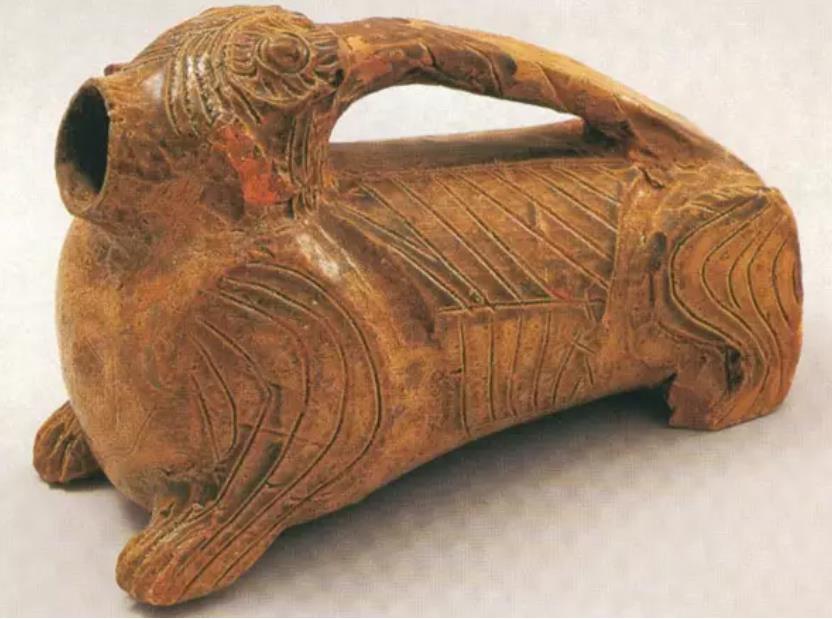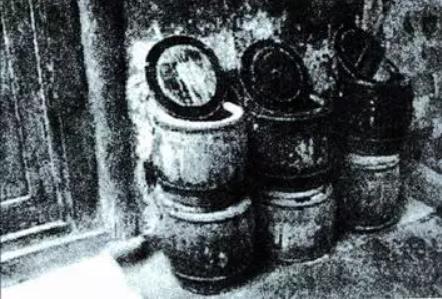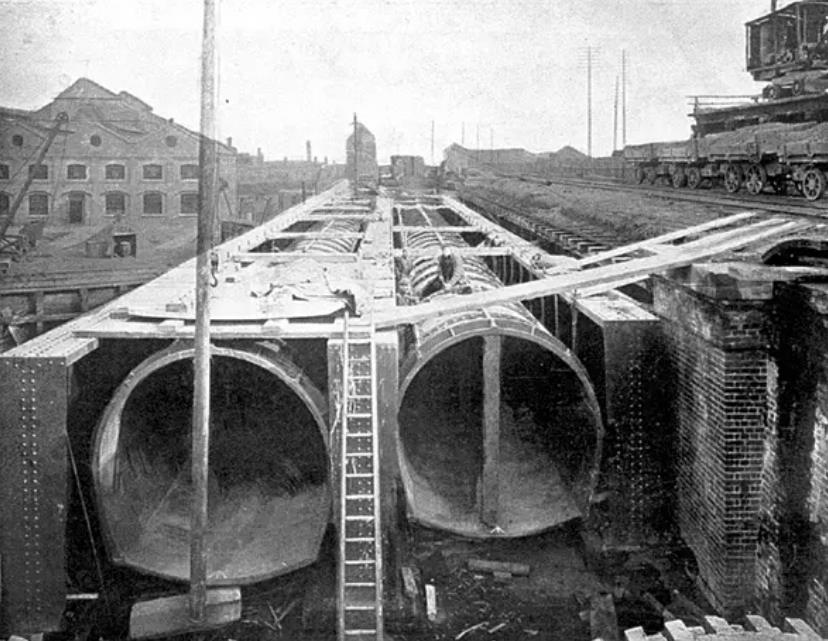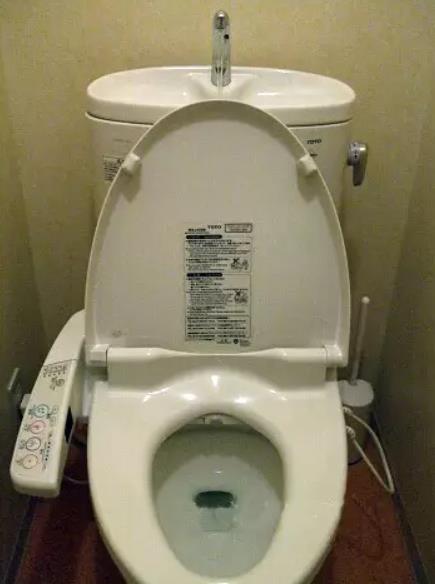Why is the flush toilet the greatest invention of mankind?
History is often stinking. Friends who are fond of foreigners and foreigners may not believe that medieval Europe can be called the worst period in human history. At that time, European garbage was piled up and sewage was flowing. People including the nobles were easily accessible under the public. From the palace to the unfinished alleys where the poor lived, the whole city was almost full of human filth. Public toilets.
Therefore, the famous British magazine "Focus" invited 100 of the most authoritative experts and 1,000 readers in China to select the list of the world's 100 greatest inventions, which is rather "ruining three views". Computers, airplanes, lights, printing, wheels, radios, etc. are well-known on the list, but above them, is the flush toilet ranked first?
Medieval Europeans urinate and defecate anywhere?
To talk about ancient Chinese toilet tools, the toilet is naturally the most representative. In the Han Dynasty, the toilet was not called "toilet", but "huzi". "Qi Zhiyi" once recorded: "The Han servants hold the clothes, down to the genus of the obscene device Huzi. ". Among them, "Huzi" refers to the toilet specially used by the emperor. In the Tang Dynasty, it is said that the name of "Huzi" was changed to "Mazi" or "Beast" because of Li Hu, the grandfather of Tang Gaozu Li Yuan. Evolve into a toilet.
 â–³Eastern Han Dynasty yellow-brown glaze tiger
â–³Eastern Han Dynasty yellow-brown glaze tiger
But no matter how the name changes, their function remains the same, that is, "human toilets", these "human toilets" are mostly wooden or ceramic, and there are many high-end products made of gold, silver and jade; in ancient China , The toilet is widely used as a toilet, from the palace to the private house, it has almost become a must-have for every household.
 â–³Chinese wooden toilets are now quite rare
â–³Chinese wooden toilets are now quite rare
The situation in Europe is similar to that in China. It also uses a human toilet similar to a toilet, but Europeans call it chamber pot or chamber pot. In addition to the slightly different appearance and material, the two are almost completely different in usage methods, but there is a more obvious difference in the handling of feces!
Europeans in the Middle Ages had two heinous "good habits". One was that they didn’t like bathing. In the Middle Ages, bathing was considered a sinful act by Christians. People generally regarded bathing as a form of corporal punishment. They don’t even take a bath for the rest of their lives; the second is littering (pull) feces and garbage. In addition to open-air filth, many people also like to clean the potty on the windowsill of the building. The general process is to open the window and empty the potty... …In 1270, Paris issued a law stating that “no one can pour “water†or “feces†from the sill windows, day or night, or they will be punished by fines.â€
However, Parisians who have developed a habit are obviously reluctant to comply with this regulation. Therefore, a century later, there is a new decree that says: "If you are willing to shout three times'watch out for urine', you can dump urine and feces from the sill window. With these two "good habits", it is not difficult for us to understand why medieval Europe was so stinking.
In contrast, urban sanitation in the Tang and Song dynasties was better than that in European cities at the same time. This was mainly due to better living habits and urban management. When it comes to handling manure and urine, the Chinese who love farming are even better. I like to collect it and use it as farmyard manure. However, in the Ming and Qing Dynasties, the situation became quite bad. People began to pour their toilets in the street. Xia Renhu’s "Old Beijing Trivia" said: "Pedestrians are mostly on the road. Although there are powerful officials to punish them, they are still decadent. Irretrievable, some officials also drowned on the road."
Ancient people's public health facilities
Although the ancients had a serious lack of hygiene awareness, it would be extremely irresponsible to deny it completely. Throwing away the human factor would still make a difference in the construction of public health facilities.
Judging from the existing archaeological data, our country had public toilets during the Yin and Shang dynasties. Public toilets developed to the Han Dynasty and were managed by special personnel. As a large agricultural country, the public toilets in the Han Dynasty were generally connected to pig pens, so that pig raising and fat accumulation were equally important. . The "Han Shu·Wu Prince Biography" once recorded: "The hogs come out in the toilet, and the official stove is broken."
In the Song Dynasty, public toilets had already become an industry. Not only were they managed by a dedicated person, but also a dedicated person to collect manure. The "Menglianglu" written by Wu Zimu in the Song Dynasty said: "Hangzhou has a lot of household registration, a home for small people in the streets, and nothing. Pit latrines only use toilets. Every day there will be people who shed their own dung. They are called'pouring their feet'. They have their own patrons and dare not take it. The owner of the dung will fight with it. "The Song Dynasty people who were good at doing business not only filled their pockets, but also earned the city the reputation of being "full of flowers".
In ancient Rome at the same time as the Han dynasty, the construction of public health facilities was at its peak; ancient Rome had the most advanced urban drainage system in the world at that time. Around the 6th century BC, the Hidalians excavated the sewer system for flood drainage. The entire sewer was made of rock. The main road was more than 5 meters wide. The 7 branches of the sewer flowed through the streets of Rome. , And finally merged into the Maxim Sewer, the main road. When the storm came, the sewer was cleaned by the huge momentum of running water; after the expansion by the Romans, the sewer is still used by the city of Rome. Thanks to such a complete drainage system, the ancient city of Rome had a total of 144 public toilets, which solved the daily “must do†of millions of people. (The ancient Romans rarely owned private toilets)
What's more surprising is that the ancient Romans also developed public toilets into places of leisure and entertainment. The public toilets were not only equipped with marble seats, but also decorated with exquisite murals and marble statues of the gods. Because it was a social place, ancient Roman public toilets paid little attention to privacy, and regardless of men and women, the toilets were designed as long rows of bays without any partitions in between, so that people could sit on their toilets and engage in natural behaviors, talking about the world, Plan gatherings, discuss politics, or negotiate business. Of course, such "golden and glorious" public toilets are of a commercial nature, but they are not expensive. As long as they pay a little money, people can gather here and enjoy it all!
The flush toilet is coming
As mentioned above, after the decline and fall of the ancient Roman Empire, health work in Europe regressed greatly. This situation continued for more than ten centuries. It was not until modern times that the situation began to improve.
During the European Renaissance (14th to 17th centuries AD), there was an English poet John Harrington who was good at writing satirical poetry. He became famous in the British court for publishing "The Metamorphosis of Elias". It is a pity that fate is always making things and making people. He was once exiled for spreading a so-called vulgar story. In Kelston, the place of exile, a frustrated poet made inventions. As a result, the world's first flush toilet was gloriously born. To a certain extent, this toilet already has the prototype of a modern toilet.
John Harrington was quite satisfied with his invention and named it "Ajax" (a hero in Homer’s Epic written by the blind ancient Greek poet Homer), and wrote a book called The book "The Metamorphosis of Chamber Pot".
Time flickered to 1595, and John Harrington, who had ended his exile, was finally able to make a big splash by installing the flush toilet he designed himself in the luxurious bedroom of Queen Elizabeth I. Although he won this honor, the British public at the time did it. Don't catch a cold. It is not difficult to imagine that London in the 16th century was a city without any major sewage pipes and no running water. The flush toilet was good, but it was an unrealistic "luxury" for most people, and people were more inclined to tradition. "Human toilet."
In 1775, British watchmaker Alexander Cummings continued Mr. Harrington’s business, and improved the toilet’s water reservoir on the original basis. He invented a valve device that made the water tank automatically close the valve when there was no water. Make the water fill automatically.
In the late 18th century, the British inventor Joseph Brahme once again improved the design of the toilet, such as the U-shaped pipe under the toilet to prevent the odor from the sewage pipe. At the same time, the whole of Europe is shrouded in an unprecedented industrial storm. The Industrial Revolution has brought about earth-shaking changes in traditional British society. A large number of rural people go to cities to earn factory salaries.
According to statistics, London had a population of 1 million in 1810, reached 2 million in 1830, and increased to 3 million in 1850. As a result, the developed industries and overpopulation put tremendous pressure on the environment. In 1832, the Thames became severely stinky, and a cholera outbreak in London killed nearly 5,300 people. In 1848, the British Parliament passed the "Public Health Act" stipulating: "Any new house or residence must have a certain sewage system and a place to store garbage." But the good times did not last long. In the summer of 1858, the famous "great stinking incident" broke out on the Thames in London. The cholera that followed once again claimed 14,000 lives. The British government was forced to start a large-scale reform under the pressure of huge public opinion. London's urban drainage system.
 â–³ The London sewer under construction, when completed in 1865, had a total length of more than 1,700 kilometers.
â–³ The London sewer under construction, when completed in 1865, had a total length of more than 1,700 kilometers.
With this series of laws and reforms, London became the first modern city in the world to build sewage sewers, and was followed by major cities in the world. (For example, Paris in 1870, Tokyo in 1884, etc.) With the supporting urban sewage system, after more than 2 centuries of silence, the flush toilet finally ushered in its own spring.
As the market continues to expand, toilet designers begin to gradually improve the works of their predecessors. In 1889, British plumber Thomas Clapp improved the toilet again. His toilet used a floating ball to control the water intake of the water storage tank, which was very convenient to use. So far, the structure of the flush toilet was basically determined.
New era, new toilet
As the times change, more and more new things have come into people’s eyes. As a toilet, the toilet seems to have no potential for development. In fact, people have been optimizing and improving the toilet. In this regard, South Korea and Japan The front end of the world.
The smart toilet originated in the United States. The original purpose was only for medical treatment and elderly protection. It was gradually developed and improved by Korean and Japanese sanitary ware companies. Its function is jaw-dropping. Take the toilet produced by Japan’s TOTO company as an example. It has basic functions such as automatic flushing, seat heating, seat relief, female-specific washing, buttocks washing, warm air drying, automatic deodorization, low-light lighting, automatic flip and other basic functions. The higher-end can also massage and relax. Music, collecting urine samples, measuring blood pressure, and recording these data on a personal computer next to the toilet can be called a mini leisure medical station.

Japanese smart toilets can do almost everything except help you take off your pants.
In 2013, Japan's Laxil company turned the smartphone into a new friend of the toilet. The company developed a "Satis" smart toilet. Users only need to download an Android system software called "My Satis" to build With Bluetooth connection, the toilet can be remotely controlled via a smart phone. It didn’t take long for Trustwave’s security experts to discover that this smart toilet had a certain security vulnerability-hackers could use program loopholes to remotely control the toilet and perform pranks. So while you enjoy an extraordinary toilet experience, beware that the toilet may rebel.
Star Light,Star Light Car,Star Light Ceiling,Galaxy Star Light Projector,Hanging Star Light
Yuyao Flylit Appliance Co.,Ltd , https://www.nbyyflylit.com